This church is built on the island fortress of Peter-Paul, which, as William Craft Brumfield explains, was intended "to serve not only--or primarily--a military function, but also as a tangible symbol of his union of state and religious institutions within a new political order in Russia" (209). Work began on the first, wooden church to be erected on the site just one month after St. Petersburg was officially founded, and the church was consecrated on April 1, 1704. In 1712, the current, stone Peter and Paul Cathedral was started, built to a design by Domenico Trezzini. It took about 20 years to build and was consecrated on June 29, 1733.
|
| A radical departure from traditional Orthodox churches based on cross-domed or centralized plan, the Peter and Paul Cathedral was built in early Baroque style like Protestant churches of Western Europe, especially those in The Netherlands. It is an elongated basiical structure with a baroque dome on the eastern end and a tall tower and spire over the western entrance. |
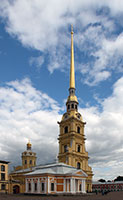 |
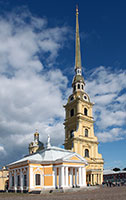 |
| |
|
Left and center: the spire at the western end; right: the baroque dome
|
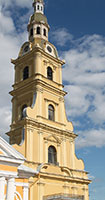 |
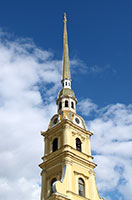 |
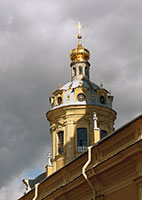 |
| |
|
The spire and the entrance"The exceptionally tall spire--394 feet high as against a total length of 210 feet--more in proportion to the city than to the church itself, was a visible assertion of Peter's wish that the horizon of St. Petersburg should be the antithesis of Moscow's with its multitudinous painted and gilded cupolas. Such pointed spires were unknown in earlier Russian architecture and were certainly suggested to Peter during his travels abroad, possibly by the forest of spires above London" (Hamilton 267). The spire resembles seventeenth century baroque architecture particularly in its use of volutes as braces for the tiers of the tower and its use of classical entablature in the repeated levels.
|
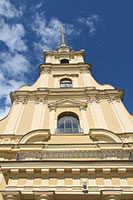 |
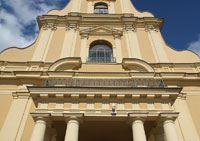 |
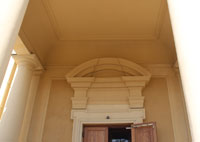 |
| |
|
 |
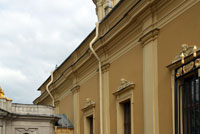 |
 |
| |
|
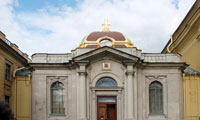 |
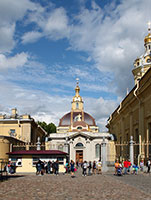 |
|
| |
|


 Click here to return to index of art historical sites.
Click here to return to index of art historical sites.
 Click here to return to index of artists and architects.
Click here to return to index of artists and architects.
 Click here to return to chronological index.
Click here to return to chronological index.
 Click here to see the home page of Bluffton University.
Click here to see the home page of Bluffton University.

